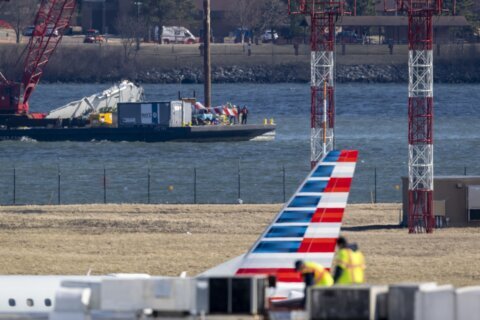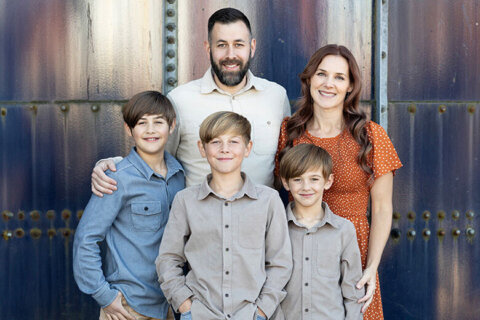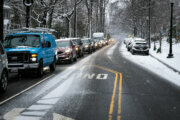This Saturday marks one month since the deadly crash near Reagan National Airport involving an Army Black Hawk helicopter and an American Airlines flight.
Sixty-seven people died the night of Jan. 29, when the two aircraft collided and plunged into the icy waters of the Potomac River as the commercial flight was about to land after making its way from Wichita, Kansas, and the Black Hawk was on a training mission.
The National Transportation Safety Board is expected to release its preliminary report on the status of its investigation in the coming weeks. The board’s full investigation is likely to take more than a year.
Former National Transportation Safety Board Chairman Christopher Hart explained a full team of investigators are piecing together the details of the collision, including everything about the condition of the two aircraft, the maintenance records, the lives of the pilots and crew and the complicated airspace regulations around Reagan National Airport.
“Their goal is to find out what went wrong, in order to try to prevent it from happening again. Their goal is not about punishing people. It’s about learning from mistakes, errors and things that go wrong to figure out what is wrong with the system,” Hart said. “Because if all you can say is that, ‘John messed up,’ or ‘Jane messed up,’ that’s not going to help you prevent it from happening in the future.”
Former NTSB and Federal Aviation Administration Safety Investigator Jeff Guzzetti is also following the investigation closely.
He said he believes the upcoming report will provide some additional, critical information that will give the aviation industry and the flying public a better idea of what happened.
“Most preliminary reports are just one or two pages with narrative. I bet you this will be a lot more, 10 or 20 pages. It’ll be all factual, no opinion,” Guzzetti said. “It will reiterate what they’ve already told the press, and it may have some newer findings, because it’s been a week or so since they put out an investigative update. But it’s going to be pretty much all of the pertinent facts that are known about the investigation thus far.”
The NTSB has already acknowledged the crew of the Black Hawk was flying at an altitude above the 200-feet maximum in what is known as “Helicopter Corridor 4.” It’s not clear if the helicopter had a malfunctioning altimeter, or if the instrument was set improperly before the flight.
Before beginning a flight, helicopter pilots check the local barometric pressure to set the aircraft altimeter to the correct altitude.
The NTSB said at its last briefing it appears the Black Hawk’s crew was wearing night vision goggles during its mission, which enhance a person’s vision, but severely limit the wearer’s peripheral vision. Many describe wearing night vision goggles like looking through a periscope.
“They’re going to look into what’s the peripheral vision in night vision goggles, and does it see light? Or does it see heat? What is it sensing?” Hart said.
Guzzetti said he also believes the FAA will mandate permanent changes to the already crowded airspace around Reagan National Airport, particularly as it relates to low altitude helicopter flights, such as the one the Black Hawk was conducing last month.
“Why is that route allowed to go underneath the final approach path? I think it was prudent for the FAA to put in those partial restrictions, and I think there’s going to be some permanent change with regard to helicopter operations along those low-level routes underneath the approach corridors for airliners,” he said.
“There is consensus around that, and I think there’s already been a change, and I think that change is going to be made more permanent and more conservative over the next few months and years,” Guzzetti added.
On the night of the crash, American Airlines Flight 5342 was flying south along the Potomac River. The pilots were instructed to approach Runway 1 at Reagan, then make a slight right turn and land on the crosswind Runway 33.
The approach was set up so another plane could depart on Runway 1. It’s a common maneuver used by controllers to get more flights in and out of Reagan National using the longest runway, Runway 1/19, which at 7,169 feet is also the busiest runway in the nation’s airport system.
Bigger planes, such as the Boeing 737 and Airbus jets, need the longer runway for safety. Smaller aircraft, such as Flight 5342, can land and take off on Runway 33, which is 5,204 feet long.
“Circle-to-land approaches or the use of Runway 33 can be very helpful for safety and congested operations,” Guzzetti said. “Certainly, I don’t think Runway 33 should be used whenever there’s an active helicopter route going right beneath it. You can bet that investigators with the NTSB and the FAA are going to deep dive into that whole concept of the specific airspace concerns and procedures for taking off and landing at Reagan National.”
Just before the collision, the crew onboard the Black Hawk helicopter was told by air traffic controllers to look for the American flight, a Canadian Regional Jet, and they acknowledged they had the plane in sight. But audio recordings suggest the helicopter crew may not have seen Flight 5342 and instead mistook another departing plane that had just taken off on Runway 1.
Get breaking news and daily headlines delivered to your email inbox by signing up here.
© 2025 WTOP. All Rights Reserved. This website is not intended for users located within the European Economic Area.








